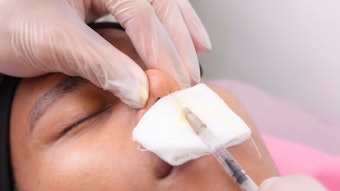
As the number of patients undergoing treatment with hylauornic acid (HA)-based fillers continues increase, so too will complications related to the treatment, including late-onset upper eyelid edema. Researchers Biana Dubinsky-Pertzov, MD, MPH, reviewed the cases of 17 patients who experienced this uncommonly recognized complication, which occurred anywhere from six to 24 months following HA filler injection to the supraorbital area.
Related: Consensus Guidelines To Reduce the Risk of HA Filler Embolic Vision Loss
The noncomparative, retrospective study of 17 consecutive patients who presented with upper eyelid edema six to 24 months after uneventful HA filler injection in the supraorbital area found that the average time of presentation was 13.9 months.
Related: HA Fillers May Cause Bone Resorption
All patients were treated with hyaluronidase. Thirteen patients (76.4%) were satisfied after hyaluronidase and requested no further treatment (observation only); four patients (23.5%) elected to receive HA filler re-treatment, with satisfactory results. All patients were followed-up for at least six months after the re-treatment.
The authors emphasized the importance of recognizing this condition and noted that hyaluronidase is an effective noninvasive treatment that offered satisfying results for both the patient and the physician.
The study was published in the Aesthetic Surgery Journal (June 2021).











